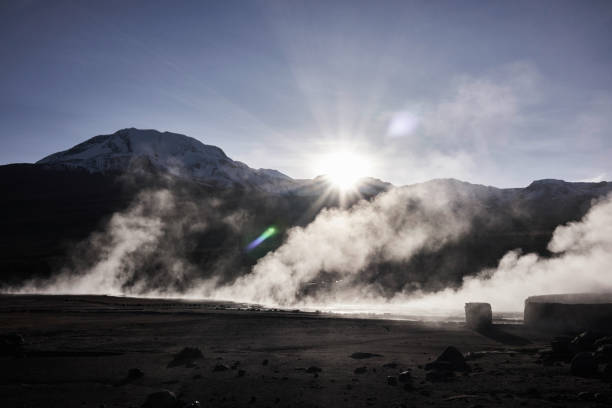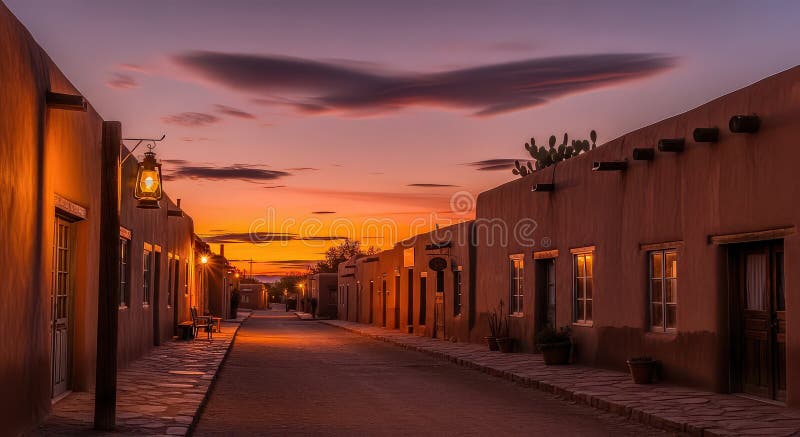Cosmic Calm in the Atacama: A Stargazer's Journey

The Atacama Desert has always held a special allure for me. As an astrophysicist specializing in exoplanet detection, I'm constantly searching for the clearest, darkest skies to unravel the mysteries of the cosmos. With its high altitude, negligible light pollution, and incredibly arid climate, the Atacama is arguably the best place on Earth for astronomical observation, hands down. My recent journey to San Pedro de Atacama, Chile, was nothing short of a revelation—a chance to not only advance my scientific pursuits but also to connect with the universe on a deeply personal level. I arrived in San Pedro under a sky already hinting at the wonders to come, a velvet canvas dusted with the promise of distant stars. The dry air, almost tangible, nipped at my skin, a stark contrast to the intense sun I knew would dominate the day, only to surrender to freezing night temperatures.
Day 1: Arrival and Acclimatization in San Pedro
After a long journey, I finally arrived in San Pedro de Atacama, a charming oasis nestled in the heart of the driest desert on Earth. The town itself is a delightful mix of adobe architecture, its earthen hues blending seamlessly with the surrounding landscape. The slow pace of life was a welcome change. The most crucial goal for the first day in a place of this altitude is acclimatization. I resisted any extensive exploration, but soaked in the environment. As the sun began to set, painting the volcanic peaks in the distance with vibrant strokes of orange, pink, and purple, I felt an immediate sense of tranquility wash over me. I captured the scene, trying to keep the small-town intimacy of San Pedro intact.
To get a taste of local culture, I ventured out for a meal at a traditional restaurant. I savored pataska, a hearty stew, paired with a robust Carménère wine. The locals were incredibly friendly, sharing stories and insights about the region.
Day 2: Hiking the Lunar Landscapes of Valle de la Luna
The second day took me on a guided hike to the Valley of the Moon (Valle de la Luna). As its name suggests, the landscape is eerily reminiscent of the lunar surface, a testament to the powerful geological forces that have shaped this region over millennia. The valley was formed by the erosion of wind and water on salt formations, creating a surreal panorama of jagged peaks, deep canyons, and vast expanses of sand and rock.
Hiking through the Valley of the Moon at golden hour was an unforgettable experience. The low-angled sunlight cast long shadows, accentuating the textures and colors of the salt formations. I spent time using my DSLR camera to try and capture the depth of the scene. I tried to make the horizon a point of focus, stopping down the camera to f/8, with an ISO of 100, in order to showcase the depth of field and detail.
The valley is, geologically speaking, still being formed. Water still flows underground, dissolving the salt that, as it dries, gives the area its alien feel. I couldn't help but reflect on the alien nature of the landscape, feeling as though I'd stepped onto another planet. It's this otherworldliness that makes the Atacama such a unique and captivating destination.
Day 3: Unveiling the Cosmos: Stargazing with High-Powered Telescopes
Day three was what I came for: a stargazing tour. Under the guidance of experienced astronomers, I had the opportunity to observe planets, nebulae, and galaxies through professional-grade telescopes. Seeing Saturn's rings with such clarity, gazing at the swirling colors of the Orion Nebula, and witnessing the sheer scale of distant galaxies was awe-inspiring. It was nothing short of spiritual.
The Atacama's exceptional atmospheric conditions make it a prime location for astronomical research. The lack of humidity and cloud cover ensures minimal atmospheric distortion, allowing for incredibly sharp and detailed observations. From this location, we can study the formation of stars, the evolution of galaxies, and even the search for exoplanets—planets orbiting stars beyond our solar system. Discovering these exoplanets is, obviously, the focus of my research.
I also tried my hand at a long-exposure photograph of the Milky Way using a star tracker to compensate for the Earth's rotation. The result, taken with a 14mm lens at f/2.8, ISO 3200, and a 30-second exposure, speaks for itself.

Day 4: Astrophotography Workshop: Capturing Cosmic Beauty
Eager to improve my astrophotography skills, I dedicated day four to a workshop led by a professional photographer specializing in capturing the night sky. I learned techniques for capturing stunning images of celestial objects, from mastering long-exposure settings to using specialized equipment like star trackers and filters.
One of the highlights of the workshop was photographing the Large Magellanic Cloud, a dwarf galaxy visible from the Southern Hemisphere. Using a telephoto lens (200mm, f/4, ISO 1600), and stacking multiple exposures to reduce noise, I captured a detailed image of this celestial neighbor. I walked away with a far better grasp of what it takes to capture the grandeur of space.
Day 5: El Tatio Geysers: A Geothermal Spectacle at Sunrise
The final day of my Atacama adventure began before dawn with a guided tour to the El Tatio geysers, one of the highest geothermal fields in the world. Arriving before sunrise, I was greeted by an ethereal scene of steam rising from the geysers against the backdrop of the Andes Mountains. The air was frigid, and the smell of sulfur hung heavy in the air, a reminder of the powerful forces at work beneath the surface.
As the first rays of sunlight pierced the horizon, the scene transformed into a spectacle of color and light. The steam plumes glowed with a golden hue, and the surrounding landscape was bathed in a warm, otherworldly glow. I struggled to capture the full breadth of the geyser field in a panorama image, working in the dim, pre-dawn light. I finally landed on an ISO of 400, an aperture of F/8, and a shutter speed adjusted according to the changing light conditions. The resulting panorama of the geyser field at sunrise, with the sky an ombré of reds, oranges, and yellows, is something I'll never forget.
The geothermal activity in El Tatio is a result of the region's volcanic history, with underground reservoirs of magma heating the groundwater, which then erupts to the surface as steam and boiling water. It was humbling. I even had the chance to try eggs boiled in the geyser water. Standing there, surrounded by this raw, untamed landscape, I felt an overwhelming sense of perspective, reflecting on how tiny we all are in the face of the universe's sheer scale and power.

Atacameño Cuisine and Astro-Dining
No trip to the Atacama is complete without experiencing the local cuisine. Throughout my journey, I savored the unique flavors and ingredients of the Atacameño region. One particularly memorable experience was "astro-dining"—enjoying a gourmet meal under the stars while a local guide explained the constellations. I remember particularly enjoying a quinoa salad with locally sourced goat cheese. This blend of local ingredients and cosmic perspective epitomized the Atacama experience for me.
Reflections on Humanity's Place in the Cosmos
The Atacama Desert, with its otherworldly landscapes and pristine night skies, offers a unique opportunity to reflect on humanity's place in the universe. Observing the vastness of the cosmos from this remote corner of the world, I was struck by the sheer scale of creation and the insignificance of our own existence. Yet, at the same time, I felt a profound sense of connection to something larger than myself, a reminder that we are all part of the same cosmic tapestry. Understanding the immensity of space, especially when considering the cosmic microwave background, the afterglow of the Big Bang, is something I grapple with daily, but here in the Atacama, it became something more visceral.
Sustainable Tourism in the Atacama Desert
As we marvel at the beauty of the Atacama Desert, it's crucial to remember our responsibility to protect this fragile environment. Here are a few recommendations for sustainable tourism practices:
- Water Conservation: Water is a precious resource in the desert. Be mindful of your water usage and avoid wasting it.
- Minimize Light Pollution: When stargazing, use red-light flashlights to avoid disrupting the darkness of the night sky.
- Support Local Businesses: Choose locally owned and operated businesses to support the local economy and preserve the cultural heritage of the Atacameño people.
The Atacama Desert is a place of unparalleled beauty and scientific significance. By practicing sustainable tourism, we can ensure that it remains pristine for generations to come. Come experience the cosmic calm of the Atacama responsibly, and discover the wonders of the universe for yourself.